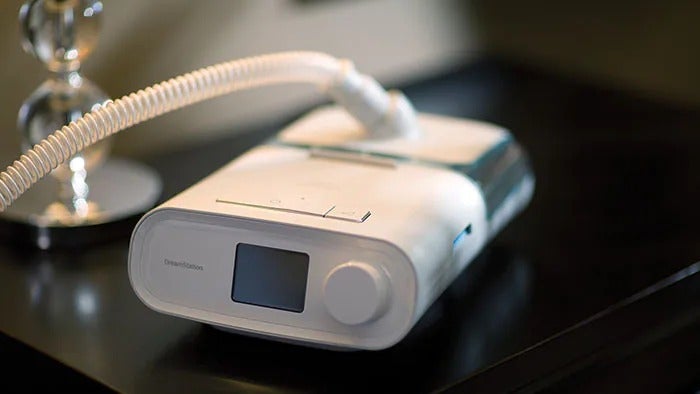
On June 14, 2021, Royal Philips’ subsidiary Philips Respironics, initiated a voluntary recall notification/field safety notice to address potential health risks related to the polyester-based polyurethane (PE-PUR) sound abatement foam in specific CPAP, BiPAP and mechanical ventilator devices.
At the time the recall notification/field safety notice was issued, Philips Respironics relied on an initial, limited data set and toxicological risk assessment, and assumed a worst-case scenario for the possible health risks out of an abundance of caution. Since then, together with five certified, independent testing laboratories in the US and Europe, as well as other qualified third-party experts, Philips Respironics has been conducting a comprehensive test and research program on the PE-PUR foam to better assess and scope the potential patient health risks related to possible emission of particulates from degraded foam and volatile organic compounds (VOCs).
This update is intended to provide healthcare providers, patients, and other stakeholders with updated information on the testing results to date. Philips will continue to provide regular updates as new test results and assessments become available, as not all tests have been completed to date.
The overall guidance for healthcare providers and patients in the recall notification/field safety notice remains unchanged at this time.
Testing methods
Testing results and conclusions to date are grouped by device air path design and configuration, i.e., based on how the air flows through the device. Of the five device categories, the first-generation DreamStation devices represent 68% of the registered affected devices globally.
Additional physical, chemical and biological testing of the PE-PUR foam related to patient risks if patients were in contact with foam material.
The complete update on the PE-PUR testing results and conclusions available to date can be found here, and the main findings have been presented below. Healthcare providers, patients, and other stakeholders should use the complete update for any informed decision making, and not the overview in this press release.
First-generation DreamStation devices (68% of registered affected devices globally)
Visual assessment: In order to determine the prevalence of foam degradation, which may result in foam particulate emission, a visual assessment of the foam was performed on a sample of 60,847 returned/used first-generation DreamStation devices from the US and Canada. The visual inspection was conducted according to a specific protocol as part of the repair process. The sample included 36,341 devices for which the users reported no use of ozone cleaning, 11,309 devices for which the users reported use of ozone cleaning, and 13,197 devices for which it was reported unknown by the user whether ozone cleaning was used.
In those devices where visible foam degradation was significant, i.e., there was reduction in foam volume, it was observed that there was accumulation of degraded foam within the airpath inside the device. The foam becomes hygroscopic (i.e., absorbs moisture) and sticky with degradation. It also loses significant volume and increases density as the structure changes from a foam to a viscous liquid material. As such, even when foam particulates are formed by degradation, they are likely to accumulate within the device and may not be directly emitted by the device.
A visual assessment of the foam was also performed on a sample of 1,360 returned/used first-generation DreamStation devices from various countries in Europe and on a sample of 931 returned/used devices from Japan.
Source: Company Press Release






